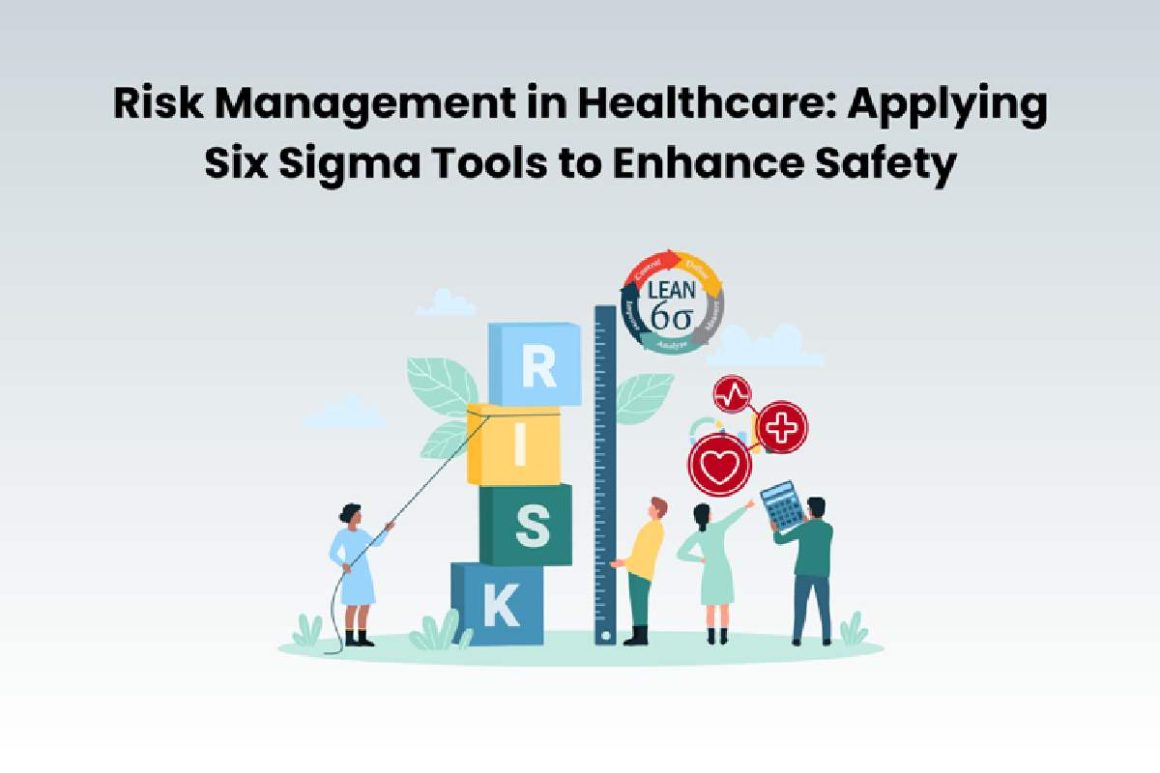Risk Management in Healthcare – In the healthcare industry, patient safety is of paramount importance, and effective risk management plays a crucial role in ensuring high-quality care. Six Sigma, a data-driven methodology for process improvement, offers valuable tools and techniques that can be applied to identify and mitigate risks in healthcare settings. In this blog, we’ll explore the significance of Six Sigma in Healthcare, the application of Six Sigma tools in enhancing safety, and the role of Six Sigma Training Course in preparing healthcare professionals to effectively utilize these methodologies.
Table of Contents
Importance of Risk Management in Healthcare
Healthcare organisations face numerous hazards that might affect patient safety, operational effectiveness, and financial stability. These hazards include financial difficulties, adverse occurrences, medical mistakes, and problems with regulatory compliance. To guarantee that patients get safe, excellent treatment, it is essential to identify, evaluate, and mitigate these risks via effective risk management.
Application of Six Sigma Tools in Risk Management
Healthcare organisations may use Six Sigma’s systematic approach to risk management by identifying possible hazards, analysing processes, and implementing mitigation strategies. The following are some essential Six Sigma instruments that may be used in healthcare risk management:
- Failure Mode and Effects Analysis (FMEA): FMEA is a systematic method for identifying potential failure modes in a process, product, or system and assessing the impact of those failures. FMEA may be used in the healthcare industry to evaluate clinical procedures and spot any threats to patient safety.
- Control Charts: Control charts are graphical tools that monitor process performance over time. Control charts are a useful tool in healthcare that may be used to monitor patient safety key performance indicators (KPIs) and spot patterns or trends pointing to possible hazards.
- Root Cause Analysis (RCA): RCA is a method for identifying the underlying causes of problems or failures. RCA may be used in healthcare to look at adverse events or medical blunders and identify the underlying reasons to avoid future occurrences of the same kind of incident.
- Statistical Analysis: To find trends, patterns, and variances in data, Six Sigma mostly uses statistical analysis. Statistical analysis may be used in the healthcare industry to evaluate risk management tactics, analyse patient outcomes, and identify improvement areas.
Role of Six Sigma Training Courses in Healthcare
Six Sigma training courses provide healthcare professionals with the knowledge and skills to apply Six Sigma methodologies effectively in risk management and process improvement initiatives. Topics like statistical analysis, risk assessment strategies, process improvement approaches, and patient safety concepts are covered in these courses.
By completing Six Sigma training courses, healthcare professionals can:
- Acquire a thorough grasp of Six Sigma concepts and practices.
- Discover how to identify and reduce risks in healthcare processes using Six Sigma tools and methodologies.
- Develop your statistical techniques and data analysis knowledge to evaluate process effectiveness and patient outcomes.
- Gain expertise in managing risks and facilitating process improvement and risk management initiatives in healthcare environments.
Implementing Six Sigma in Healthcare Organizations
Healthcare organisations must take a strategic approach to integrating the Six Sigma methodology that considers the particular difficulties and complexity of the sector. This section will examine how healthcare organisations may successfully use Six Sigma concepts to raise overall quality of care, expedite procedures, and increase patient safety.
Case Studies: Successful Applications of Six Sigma in Healthcare
Analysing actual cases of Six Sigma application in the healthcare industry might provide insightful information on the methodology’s efficacy and impact. This section will provide case studies of healthcare institutions that have effectively used the Six Sigma methodology to tackle particular issues, attain quantifiable enhancements, and raise the bar for patient care.
Conclusion
Patient safety is the primary concern of risk management, an essential component of healthcare operations. Using Six Sigma methodology and technologies may improve risk management procedures in the healthcare industry, leading to better patient outcomes and organisational performance. Healthcare workers are invaluable to organisations aiming for excellence in patient care and safety. Six Sigma training courses give them the knowledge and abilities to apply Six Sigma principles in risk management and process improvement initiatives.


